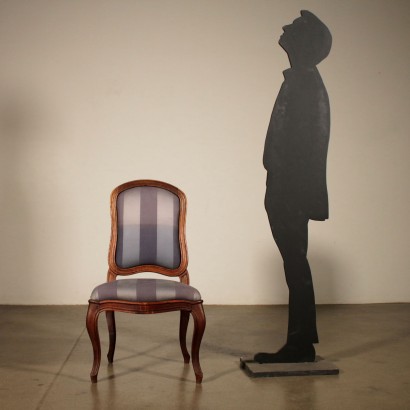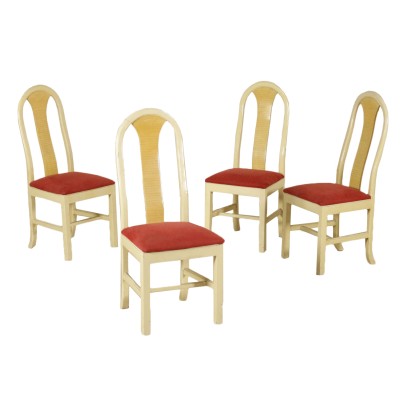Set of Six Chairs Louis XV Carved Walnut Italy First Half of 1700s
Features
Style: Louis XV (1722-1774)
Age: 18th Century / 1701 - 1800
Origin: Italy
Main essence: Walnut
Description
Set of six serpentine carved chairs. Back and seat with removable padded cushions. Manufactured in Italy, first half of the 18th century.
Product Condition:
The item shows signs of wear due to age. Any damage or loss is displayed as completely as possible in the pictures. It may require restoration and recovery of french polish.
Dimensions (cm):
Height: 97
Width: 54
Depth: 54,5
Seat height: 48
Additional Information
Style: Louis XV (1722-1774)
The chronological terms of this stylistic phase only approximately coincide with the years of the reign of the French sovereign (from 1722 to 1774).It has in fact been seen that already in the period of the Orleans regency there are precognitions and extensive developments in the Rococo sense, and moreover since the 1950s the change in taste in the Neoclassical sense becomes full-blown fashion already around 1760.
Age: 18th Century / 1701 - 1800
18th Century / 1701 - 1800Main essence: Walnut
Walnut wood comes from the plant whose botanical name is juglans regia , probably originally from the East but very common in Europe. Light or dark brown in color, it is a hard wood with a beautiful grain, widely used in antique furniture. It was the main essence in Italy throughout the Renaissance and later had a good diffusion in Europe, especially in England, until the advent of mahogany. It was used for solid wood furniture and sometimes carvings and inlays, its only big limitation is that it suffers a lot from woodworm. In France it was widely used more than anything else in the provinces. In the second half of the eighteenth century its use decreased significantly because mahogany and other exotic woods were preferred. Alternative proposals





























